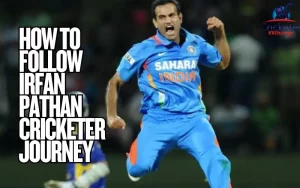Cricket is a sport steeped in history, tradition, and passion. It has evolved significantly over the years, and at the heart of this evolution are the cricketers—individuals who have dedicated their lives to mastering the game. At Cricketer Exchange, we explore the journey of cricketers, from their humble beginnings to becoming legends of the sport. This comprehensive guide will delve into the various stages of a cricketer’s evolution, the challenges they face, and the impact they have on the game and its fans.
The Early Days: Discovering the Passion
The journey of a cricketer often begins in childhood, where the love for the game is ignited. Many cricketers start playing in their backyards, local parks, or school grounds, using makeshift equipment and improvising with whatever they have. This early exposure to cricket is crucial, as it lays the foundation for their future development.
Grassroots Cricket
Grassroots cricket is where aspiring cricketers learn the basics of the game. Local clubs, schools, and community programs play a vital role in nurturing young talent. Coaches and mentors help young players develop their skills, understand the rules, and cultivate a love for the sport. This stage is essential for building a strong foundation in batting, bowling, and fielding techniques.
The Role of Family and Community
Support from family and the community is instrumental in a cricketer’s early development. Parents often encourage their children to pursue their passion for cricket, providing them with the necessary resources, such as equipment and training opportunities. Community cricket clubs also offer a platform for young players to compete and gain valuable experience.
The Path to Professionalism: Training and Development
As young cricketers progress, many aspire to take their game to the next level. This transition from amateur to professional cricket involves rigorous training, dedication, and a commitment to improvement.
Specialized Coaching
At this stage, aspiring cricketers often seek specialized coaching to refine their skills. Professional coaches provide tailored training programs that focus on technique, fitness, and mental preparation. This coaching is crucial for players looking to compete at higher levels, such as regional or national competitions.
Fitness and Conditioning
Physical fitness is a cornerstone of a cricketer’s development. Players must maintain peak fitness levels to endure the demands of the game. Strength training, agility drills, and endurance exercises are integral parts of a cricketer’s training regimen. A well-rounded fitness program helps prevent injuries and enhances overall performance on the field.
Participation in Competitive Cricket
Competing in local leagues, school tournaments, and representative teams allows to gain valuable match experience. These competitions provide a platform for players to showcase their skills, learn from their mistakes, and develop their game under pressure. Performing well in these matches can lead to selection for higher-level teams.
Breaking into the Professional Scene
For many cricketers, the dream of playing at the professional level becomes a reality through hard work and perseverance. This stage marks a significant milestone in their journey.
Domestic Cricket
Most cricketers begin their professional careers in domestic cricket, representing regional or state teams. Domestic competitions serve as a proving ground for players, allowing them to demonstrate their skills and gain recognition. Performances in domestic leagues can lead to opportunities at the international level.
The Role of Scouting and Selection
Talent scouts and selectors play a crucial role in identifying promising cricketers. They attend domestic matches to evaluate players and assess their potential for higher honors. A standout performance can catch the eye of selectors, leading to invitations for trials or national team selection.
The Pressure of Professionalism
Transitioning to professional cricket comes with its own set of challenges. The pressure to perform consistently, meet expectations, and maintain fitness can be overwhelming. Cricketers must learn to manage this pressure while staying focused on their game.
The International Stage: Representing the Nation
Reaching the international level is the pinnacle of a career. Representing one’s country is a dream come true for many players, and it comes with immense pride and responsibility.
The Journey to International Selection
The path to international selection is highly competitive. Players must consistently perform at a high level in domestic cricket to be considered for national teams. Trials, training camps, and performance evaluations are part of the selection process.
The Experience of Playing International Cricket
Playing for the national team exposes to a new level of competition. They face some of the best players in the world and compete in high-stakes matches. The experience gained at this level is invaluable, as it helps players develop their skills and mental toughness.
The Impact of International Cricket
International cricket have a significant impact on the sport and its fans. They become role models for aspiring cricket and inspire a new generation to take up the game. Their performances are celebrated, and they often enjoy a celebrity status, with fans following their careers and achievements closely. The influence of international cricketers extends beyond the field, as they engage in philanthropic efforts, promote the sport, and contribute to its growth globally.
The Evolution of Playing Styles

As cricket has evolved, so too have the playing styles and strategies employed by cricket. The game has seen significant changes in batting techniques, bowling styles, and fielding approaches, influenced by advancements in training, technology, and the introduction of new formats.
Traditional vs. Modern Techniques
Traditionally, cricket relied on classic techniques that emphasized patience and technique. However, the modern game has seen the rise of aggressive batting styles, innovative bowling strategies, and dynamic fielding. Players now incorporate power hitting, unorthodox shots, and variations in bowling to outsmart opponents.
The Impact of Technology
Technology has revolutionized the way cricket train and prepare for matches. Video analysis, data analytics, and performance tracking tools allow players to assess their strengths and weaknesses. This data-driven approach helps cricketers refine their skills and make informed decisions during matches.
The Rise of T20 Cricket
The introduction of T20 cricket has transformed the landscape of the game. This fast-paced format has encouraged cricketers to adapt their playing styles, focusing on quick scoring and aggressive tactics. T20 leagues around the world have provided a platform for players to showcase their skills and gain international recognition.
Challenges Faced by Cricketers
The journey of a cricketer is not without its challenges. From injuries to intense competition, players must navigate various obstacles throughout their careers.
Injuries and Recovery
Injuries are an unfortunate reality in cricket, and they can significantly impact a player’s career. Cricketers must prioritize injury prevention and recovery, often working closely with physiotherapists and trainers. The mental toll of injuries can also be challenging, as players must remain positive and focused during rehabilitation.
Competition and Selection Pressure
The competition for spots in national teams is fierce, with numerous talented players vying for limited positions. This pressure can lead to stress and anxiety, making it essential for cricketers to develop coping strategies and maintain a strong mental game.
Balancing Personal Life and Professional Commitments
The demands of professional cricket can take a toll on a player’s personal life. Long tours, training schedules, and media commitments can lead to challenges in maintaining relationships and personal well-being. Cricketers must find a balance to ensure they remain grounded and focused on their game.
The Legacy of a Cricketer
As cricketers progress through their careers, they leave behind a legacy that influences future generations. The impact of their contributions to the sport is felt long after they retire.
Inspiring Future Generations
Iconic cricketers serve as role models for aspiring players, inspiring them to pursue their dreams. Their achievements, both on and off the field, motivate young cricketers to work hard and strive for excellence. The stories of legendary cricketers often become part of cricket folklore, passed down through generations.
Contributions to the Game
Many retired cricketers continue to contribute to the sport through coaching, commentary, and administration. Their experience and knowledge help shape the future of cricket, ensuring that the game continues to evolve and thrive.
The Importance of Mentorship
Mentorship plays a crucial role in the development of young cricketers. Experienced players often take on mentoring roles, guiding the next generation and sharing valuable insights. This mentorship fosters a sense of community within the sport and helps preserve its rich traditions.
Conclusion: The Ongoing Journey
The evolution of a cricketer is a journey filled with passion, dedication, and resilience. From their early days of discovery to the heights of international fame, cricketers navigate a path that is both challenging and rewarding. At Cricketer Exchange, we celebrate this journey, recognizing the hard work and commitment that goes into becoming a successful cricketer. As the sport continues to evolve, so too will the stories of the cricketers who inspire us all. Whether you are an aspiring player or a devoted fan, the world of cricket offers a rich tapestry of experiences that unite us in our love for the game.



































